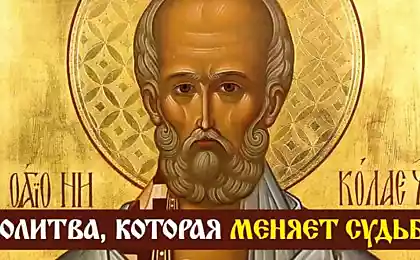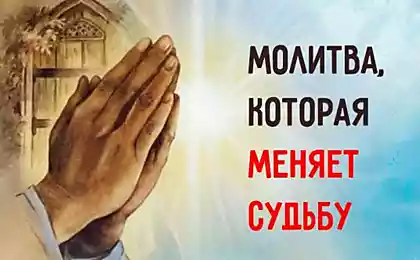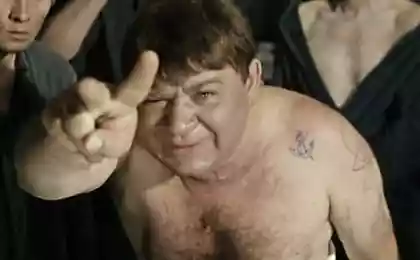922
Great Warrior "Iskander"
Today came across a very interesting article about the "Iskander" I know that this issue has been discussed many times, but I still want to share it with vami.Chitaya such articles, I always ispytvat sense of the city for our country.
According to Western military and political experts, high accuracy, combined with a range of missiles PTRC "Iskander" guarantee Russian military defeat even well-hardened targets in Europe. "They do not stop and do not knock down" - say Western analysts.
Since its inception in 2009, holding "Highly complex" has achieved great success in domestic and international markets. Products holding companies are well known not only to users, but also their opponents. According to some reports, the Syrian "armor" knocked penetrator this Arab country Turkish reconnaissance plane "Phantom." Anti-tank missile complexes "Cornet" turned out to be a deadly weapon for the Israeli tanks in Lebanon. In five years, ATRA "Cornet" has become one of the world's most popular anti-fighting systems, and the new version with the ability to deal with the UAV has already found a buyer.
In 2013, in the "high-precision systems" has become a unique company, the manufacturer of the latest high-precision tactical missile complex "Iskander" Engineering Design Bureau in Kolomna.
Will be 10 photos + video.
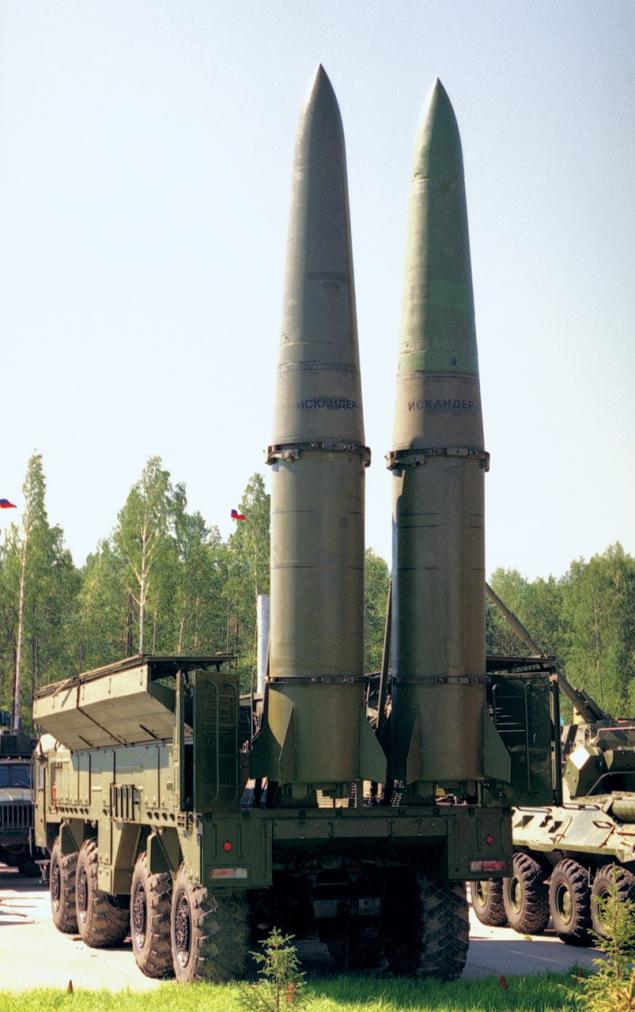
As at the time missiles "Oka", "Temp-S" and "Pioneer" and today "Iskander" evolved from the military means to political and military tools. It is noteworthy that the US military include the latest operational and tactical set to arm, "Block access to the theater of military action," that is capable by their presence significantly affect the balance of forces in the area of possible conflict and prevent it from start.
Tactical complex "Iskander" remains one of the most mysterious weapons systems in the arsenal of the Russian army and its details are scarce enough.
In one version of the missile complex got its name in honor of the great general of Alexander the Great (he wore a horned helmet, on the East called him Iskander antlered; missile system also has two rockets). Or just east analogue named Alexander - a "winner."
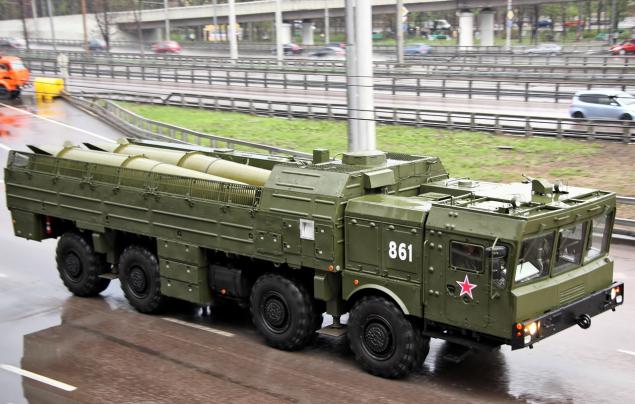
Nuclear Storm over Europe
If you look closely at the weapons and military equipment to the armies of the developed world, it is evident at once that the operational-tactical missile systems have found limited use there. Modern armies are more focused on the strike aircraft with precision aviation means of defeat. Although still in the 80-90-ies in the same arsenal of the United States Army was a lot of PTRC, quantity and especially the quality did not go to any comparison with the challenges in the armies of the Soviet Union and Warsaw Pact tactical complexes "Elbrus" "Temp-S", "point" and "Oka».
Why did the Soviet, now Russian military leadership relies on PTRC?
For the answer to this question, we turned to historian and author of books and articles on NATO's confrontation, the Soviet Union and the Warsaw Pact Eugene Putilov. "In contrast to the aviation experience limitations due to weather conditions and the need to carry out a pre-complex organization of air operations, missile systems could be used for nuclear strikes immediately. No protection against ballistic missiles did not have. "
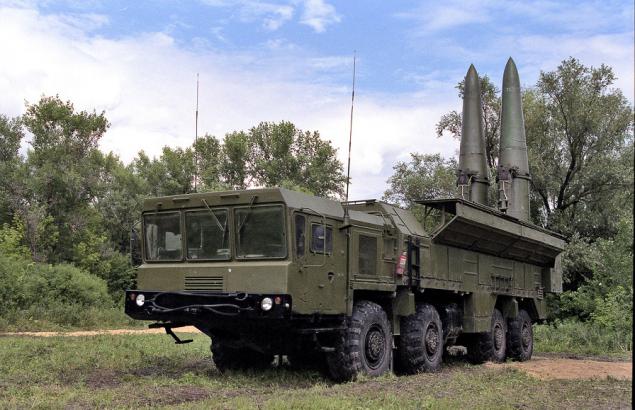
According to Eugene Putilova, the basis of hostilities in Europe had to make strategic transactions carried out by the coalition groups of fronts on a single concept and under a single command. "It was assumed - he says - that the depth of the offensive front will be up to one thousand kilometers, and the average rate of advance - up to 100 km / day for the general army, and even up to 120 km / day for the tank. Achieving such growth was achieved through the defeat of tactical nuclear weapons combat formations of the enemy at the same time the entire depth of the front-line offensive ».
Also Eugene Putilov said that because nuclear weapons for artillery in the Soviet army before the beginning of the 70s actually did not exist, the main carrier of nuclear weapons, available to the Front Command is operational-tactical missile systems front and army sets.
"This is clearly seen on the example of the front advancing from the territory of Bulgaria, - the historian. - Here superiority in the air on the side of the enemy, although the front was to advance in three to four days at a depth of 150-185 km, and then during the week to perform further tasks to a depth of 220 kilometers, with the intensification of the Black Sea straits. The primary means of breaking the enemy's defense in the mountain passes and narrow waters were operational-tactical missiles with nuclear weapons ».
PTRC became Soviet "nuclear club", paving the way for combined arms formations. Track and destroy them to western countries it was very difficult. NATO saved only low accuracy and a relatively small army firing range PTRC 9K72 "Elbrus" and division "Moon." But the situation changed when the composition of the Strategic Missile Forces in the Army transferred long-range "Temp-S", and adopt the army and frontline missile brigades arrived precision PTRC "Oka».
"After the transfer in 1970 of the Strategic Missile Forces in the Army complexes 9K76" Temp-S "frontline commanders had an opportunity on the first day of hitting targets throughout the entire depth of problems the offensive front, - said Eugene Putilov. - Further demarcation line ran nuclear strikes strategic and tactical means and objectives we belong to the competence of the Strategic Rocket Forces ».
According to the chief editor of the Internet-project "Military Frontier" Oleg Kovshar, PTRC type "Oka" and "Temp-S" command cherished: "Pre-planning a nuclear strike at the operational level to connect only 10-15 percent of the PTRC - says our interlocutor. - The main burden lay on medium-range missiles - connect them to the NF including for the operational level. The available stock and the RDA PTRC type 9K72 is allowed. The basic amount of complexes of "Oka" and "Temp-S" was supposed to start work after the outbreak of the conflict, that is to receive target information during the development of the situation on newly identified targets, such as the means of nuclear attack NATO vertoletodromy, concentrations of troops operating reserves, and so on. d. ».
By the mid-80s Soviet troops and Warsaw Pact countries have begun testing the first reconnaissance-strike complexes based PTRC "Oka" and "Temp-S", which are issued by targeting for ground and aerial reconnaissance, and later satellite systems. Given that the time to prepare for the start, the introduction of the flight task and the launch itself fit in within 20 minutes of both complexes, identified the object is guaranteed to be destroyed in the period from 30 minutes to one hour. It is noteworthy that in the early 80-ies of the special warheads in the arsenals of the PTRC pushed cluster warhead. Under the punch complex "Oka" and "Temp" got position American ballistic "Pershing-2" and cruise missiles "Tomahawk" land-based. In this situation, US President Ronald Reagan initiated negotiations on the reduction of intermediate and short range, culminating in the signing of the December 8, 1987 the indefinite Treaty on the Elimination of Intermediate-Range.
"The official motivation of the Americans at the requirement to reduce under the INF Treaty missile system 9K714" Oka "was the fact that the same size of the US missile could have a range of 500 kilometers, - says historian Eugene Putilov. - Soviet "Oka" on the tests showed a maximum flight range of 407 kilometers. However, the position of the Soviet negotiators allowed the Americans to demand unilateral reduction systems "Oka" under the slogan "You promised." This was done ».
In reduced the INF Treaty command of the Armed Forces of the USSR in 1987 to formulate the requirements for the future PTRC, capable of destroying a well-defended targets with missiles with both nuclear and with conventional warheads in a counter enemy, not only during the flight the rocket, but also on stage of its preparation and exit to the starting position. So complex and began designed in 1987 Kolomna KBM on its own initiative on the orders and under the leadership of Sergei Pavlovich Invincible "Iskander».
PTRC "Iskander" on duty in the west of Russia. December 2013. Photo by Alexander Pak, the press service of the Western Military District.
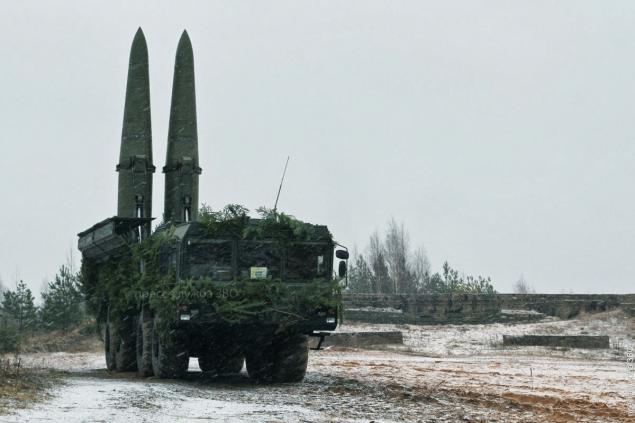
The birth of the warrior
"In the beginning it was the missile 8K14 - says editor in chief of Internet project Militaryrussia Dmitry Kornev. - Appearing at the beginning of the 50s on the basis of the German V-2 rocket to the end of the decade has provided the basis for effective missile system 9K72 "Elbrus". At the turn of 50-60-ies came to realize the effectiveness of new trends - military (tactical), army and front missile systems, as well as Western innovations such as solid rocket. And a broad front, work began on several types of complexes ».
According to the expert, with a fairly revolutionary project in the mid-60s acted GKAT OKB-2 (the future "Torch"), proposed the creation of complex military missiles "Hawk" and "point" on the basis of anti-aircraft missile B-611. But from the OKB-2 waiting for air and missile defense systems, so at the end of the 60 works on ground in the direction of CB were curtailed, and the documentation of the "points" handed Kolomna KBM.
"By the end of 60-ies in the USSR were established effective mobile chassis, compact and more accurate inertial control system, the effective composite solid propellants and engines at its base, small nuclear warheads. On the agenda was the creation of reconnaissance-strike complexes. Therefore, in the 70-80-ies in short-range missiles was a real boom, "- said the publication of Kornev.
The expert explained that in 1972, due to the workload MITA works on creation of mobile ICBMs "Temp-2C" conceptual design of complex 9K711 "Uranus" passed for completion in KBM (KBM), where its base was a new missile system 9K714 "Oka". Then began a triumphal procession of MSC in the segment of ballistic missile systems of short-range action.
"9K714" Oka "with a range of up to 500 kilometers gradually transformed into the 9K717" Oka-U ", which was supposed to grow up" Volga "with a range of about 1,000 kilometers. On the basis of these complex research "Wave" KBM to the late '80s - early' 90s planning to create an entirely new class of missile - unified versatile modular missile system that could be used for the benefit of divisions, armies and fronts missiles of various types, yielding targeting from different sources "- continued Kornev.
According to the expert, on the "Wave" was planned to implement the retargeting of missiles in flight according to information from aircraft and other "eyes and ears" reconnaissance-strike complexes. But intervened INF Treaty.
"Initially, the creators of the new dvuhraketnogo tactical complex 9K715" Iskander "aims to create a system that can guarantee (two missiles) to destroy an important target at a distance of 70 to 300 kilometers. Advances in technology allowed several times to reduce outfit means necessary to destroy important targets. This is a comparison with the armament complexes 9K72 "Elbrus", which was supposed to replace the "Iskander" in the 80s. But the signing of the INF Treaty has made adjustments to the development of missile systems in our country, and the "Iskander" became "Iskander-M" - as we know it today ", - summed Dmitry Kornev.
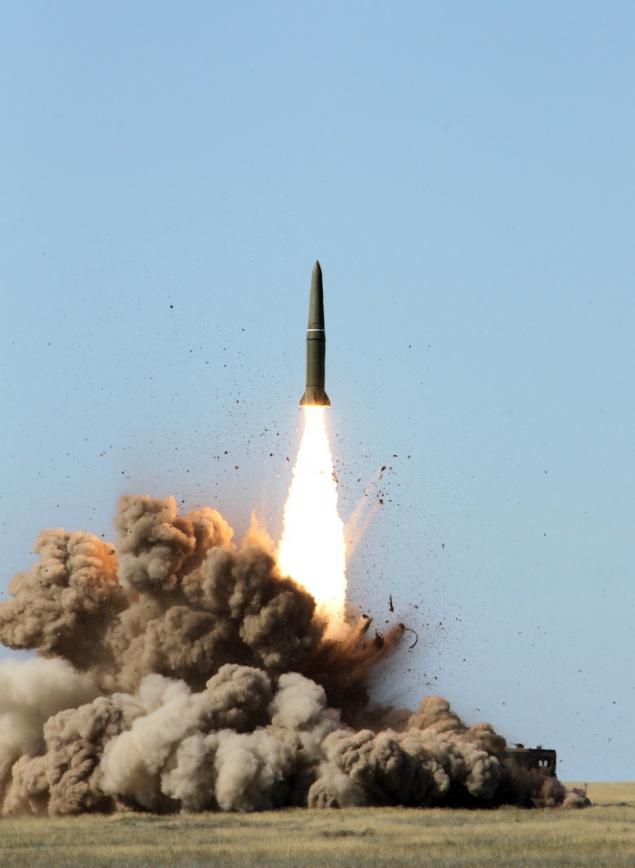
From launch to the modular system
Work on the complex "Iskander" began in 1988. Surprisingly, the collapse in 1991 of the USSR slightly influenced the creation of the new PTRC. In the summer of 1991 were the first starts throwing at Kapustin Yar, and in 1992 the Volgograd plant "Titan" has presented the first chassis for the new complex. But in 1993 the work of "Iskander" shifted to the creation of a "multi-purpose modular missile system of land forces", which received the name of "Iskander-M».
Newest operational-tactical complex became the top creative chief designer MSC Sergei Pavlovich Invincible, to which he was going to create "points", "Oka", "Oka-M", and so on. D. The latest "Iskander" embodies all the experience and skill of its creator .
"Now MSC only improves" Iskander ", improves the performance of its components, mechanisms, puts the new avionics, sighting systems, and so on.. All the rest is done Sergey Nepobedimy by developing a unified universal modular missile system" Iskander ", - he told the newspaper" Military -Industrial Courier "Dmitry Kornev.
New PTRC should hit targets not only conventional ballistic missiles with different warheads, but also cruise. In 1995 there was the first experimental launcher Belarusian MZKT chassis and began throwing missile launches. In 1997 at the Kapustin Yar started comprehensive tests, culminating in the 2004 adoption of the operational-tactical complex "Iskander-M" in the Russian Army. Already next year the first complex entered service 630-th separate missile battalion of the 60th Center for combat use in Kapustin Yar. In the same year a draft export model PTRC "Iskander", received the name of "Iskander-E" (export) and differ from the product launcher on a missile with reduced range instead of two in the embodiment of "Iskander-M».
Until this year, a new set of rearmed several missile brigades.
Work on cruise missile started in 1999. After the state tests in 2007, F-500 entered service. Initially, it was assumed that a cruise missile will be created a new version - "Iskander-K." Several times option "K" appeared in various exhibitions of weapons, causing a genuine interest of foreign buyers. But apparently, cruise missiles will be supplied only to the Armed Forces of the Russian Federation.
According to General Director Valery Kashin MSC it has already developed and adopted for service five types of missiles as a aeroballistic and winged, three more are in development. It is noteworthy that the ammunition "Iskander" missiles have a penetrating warhead to destroy bunkers and other fortifications.
Armament potential enemy also is not in place, there are new systems and missile defense. Now the American air defense system "Patriot" has passed a significant modernization and is capable of hitting targets aeroballistic. Not far behind, and the US Navy, received an upgraded missile SM-2 and SM-3 interceptor. Naval and land systems constitute a single integrated system of missile defense in the theater of operations. But the answer is, and the Russian side. According to some media reports, the missiles for the complex "Iskander" got the system to overcome the enemy's missile defense. Such measures are implemented even in the PTRC "Oka", are passive and active jamming systems, missiles hidden in the body. When approaching the target of the rocket separated chaff, small jammers and so on. D.
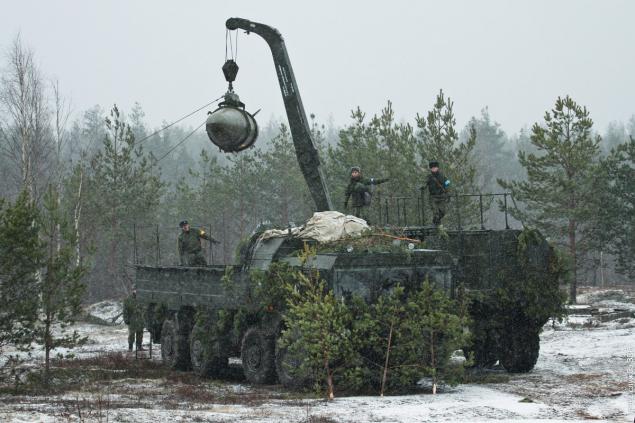
Headache NATO
The latest tactical "Iskander-M" come into service, not only missile brigades district (front) submission, and brigades subordinate staffs combined armies, replacing it reliable, but already rather outdated tactical missile complexes "Tochka-U" .
According to independent military experts, one of the authors of the book "The tanks of August", dedicated to the Russian-Georgian conflict in August 2008, Anton Lavrov, "Iskander" with its significantly grown in comparison with "Tochka-U" accuracy and range dramatically enhances missile brigades. At the disposal of the Land Forces for the first time after the rejection of the INF appears its long arm capable of striking miniature key enemy targets in its hinterland virtually the entire depth of tactical aviation activities.
"In today's conflict" Iskander-M "will assume the task of reducing under the INF Treaty PTRC" Temp-S "and possibly a" pioneer ", while possessing of range performance of" Oka ", - has assumed the chief editor of the Internet-project" Military abroad "Oleg Kovshar.
Source:
According to Western military and political experts, high accuracy, combined with a range of missiles PTRC "Iskander" guarantee Russian military defeat even well-hardened targets in Europe. "They do not stop and do not knock down" - say Western analysts.
Since its inception in 2009, holding "Highly complex" has achieved great success in domestic and international markets. Products holding companies are well known not only to users, but also their opponents. According to some reports, the Syrian "armor" knocked penetrator this Arab country Turkish reconnaissance plane "Phantom." Anti-tank missile complexes "Cornet" turned out to be a deadly weapon for the Israeli tanks in Lebanon. In five years, ATRA "Cornet" has become one of the world's most popular anti-fighting systems, and the new version with the ability to deal with the UAV has already found a buyer.
In 2013, in the "high-precision systems" has become a unique company, the manufacturer of the latest high-precision tactical missile complex "Iskander" Engineering Design Bureau in Kolomna.
Will be 10 photos + video.

As at the time missiles "Oka", "Temp-S" and "Pioneer" and today "Iskander" evolved from the military means to political and military tools. It is noteworthy that the US military include the latest operational and tactical set to arm, "Block access to the theater of military action," that is capable by their presence significantly affect the balance of forces in the area of possible conflict and prevent it from start.
Tactical complex "Iskander" remains one of the most mysterious weapons systems in the arsenal of the Russian army and its details are scarce enough.
In one version of the missile complex got its name in honor of the great general of Alexander the Great (he wore a horned helmet, on the East called him Iskander antlered; missile system also has two rockets). Or just east analogue named Alexander - a "winner."

Nuclear Storm over Europe
If you look closely at the weapons and military equipment to the armies of the developed world, it is evident at once that the operational-tactical missile systems have found limited use there. Modern armies are more focused on the strike aircraft with precision aviation means of defeat. Although still in the 80-90-ies in the same arsenal of the United States Army was a lot of PTRC, quantity and especially the quality did not go to any comparison with the challenges in the armies of the Soviet Union and Warsaw Pact tactical complexes "Elbrus" "Temp-S", "point" and "Oka».
Why did the Soviet, now Russian military leadership relies on PTRC?
For the answer to this question, we turned to historian and author of books and articles on NATO's confrontation, the Soviet Union and the Warsaw Pact Eugene Putilov. "In contrast to the aviation experience limitations due to weather conditions and the need to carry out a pre-complex organization of air operations, missile systems could be used for nuclear strikes immediately. No protection against ballistic missiles did not have. "

According to Eugene Putilova, the basis of hostilities in Europe had to make strategic transactions carried out by the coalition groups of fronts on a single concept and under a single command. "It was assumed - he says - that the depth of the offensive front will be up to one thousand kilometers, and the average rate of advance - up to 100 km / day for the general army, and even up to 120 km / day for the tank. Achieving such growth was achieved through the defeat of tactical nuclear weapons combat formations of the enemy at the same time the entire depth of the front-line offensive ».
Also Eugene Putilov said that because nuclear weapons for artillery in the Soviet army before the beginning of the 70s actually did not exist, the main carrier of nuclear weapons, available to the Front Command is operational-tactical missile systems front and army sets.
"This is clearly seen on the example of the front advancing from the territory of Bulgaria, - the historian. - Here superiority in the air on the side of the enemy, although the front was to advance in three to four days at a depth of 150-185 km, and then during the week to perform further tasks to a depth of 220 kilometers, with the intensification of the Black Sea straits. The primary means of breaking the enemy's defense in the mountain passes and narrow waters were operational-tactical missiles with nuclear weapons ».
PTRC became Soviet "nuclear club", paving the way for combined arms formations. Track and destroy them to western countries it was very difficult. NATO saved only low accuracy and a relatively small army firing range PTRC 9K72 "Elbrus" and division "Moon." But the situation changed when the composition of the Strategic Missile Forces in the Army transferred long-range "Temp-S", and adopt the army and frontline missile brigades arrived precision PTRC "Oka».
"After the transfer in 1970 of the Strategic Missile Forces in the Army complexes 9K76" Temp-S "frontline commanders had an opportunity on the first day of hitting targets throughout the entire depth of problems the offensive front, - said Eugene Putilov. - Further demarcation line ran nuclear strikes strategic and tactical means and objectives we belong to the competence of the Strategic Rocket Forces ».
According to the chief editor of the Internet-project "Military Frontier" Oleg Kovshar, PTRC type "Oka" and "Temp-S" command cherished: "Pre-planning a nuclear strike at the operational level to connect only 10-15 percent of the PTRC - says our interlocutor. - The main burden lay on medium-range missiles - connect them to the NF including for the operational level. The available stock and the RDA PTRC type 9K72 is allowed. The basic amount of complexes of "Oka" and "Temp-S" was supposed to start work after the outbreak of the conflict, that is to receive target information during the development of the situation on newly identified targets, such as the means of nuclear attack NATO vertoletodromy, concentrations of troops operating reserves, and so on. d. ».
By the mid-80s Soviet troops and Warsaw Pact countries have begun testing the first reconnaissance-strike complexes based PTRC "Oka" and "Temp-S", which are issued by targeting for ground and aerial reconnaissance, and later satellite systems. Given that the time to prepare for the start, the introduction of the flight task and the launch itself fit in within 20 minutes of both complexes, identified the object is guaranteed to be destroyed in the period from 30 minutes to one hour. It is noteworthy that in the early 80-ies of the special warheads in the arsenals of the PTRC pushed cluster warhead. Under the punch complex "Oka" and "Temp" got position American ballistic "Pershing-2" and cruise missiles "Tomahawk" land-based. In this situation, US President Ronald Reagan initiated negotiations on the reduction of intermediate and short range, culminating in the signing of the December 8, 1987 the indefinite Treaty on the Elimination of Intermediate-Range.
"The official motivation of the Americans at the requirement to reduce under the INF Treaty missile system 9K714" Oka "was the fact that the same size of the US missile could have a range of 500 kilometers, - says historian Eugene Putilov. - Soviet "Oka" on the tests showed a maximum flight range of 407 kilometers. However, the position of the Soviet negotiators allowed the Americans to demand unilateral reduction systems "Oka" under the slogan "You promised." This was done ».
In reduced the INF Treaty command of the Armed Forces of the USSR in 1987 to formulate the requirements for the future PTRC, capable of destroying a well-defended targets with missiles with both nuclear and with conventional warheads in a counter enemy, not only during the flight the rocket, but also on stage of its preparation and exit to the starting position. So complex and began designed in 1987 Kolomna KBM on its own initiative on the orders and under the leadership of Sergei Pavlovich Invincible "Iskander».
PTRC "Iskander" on duty in the west of Russia. December 2013. Photo by Alexander Pak, the press service of the Western Military District.

The birth of the warrior
"In the beginning it was the missile 8K14 - says editor in chief of Internet project Militaryrussia Dmitry Kornev. - Appearing at the beginning of the 50s on the basis of the German V-2 rocket to the end of the decade has provided the basis for effective missile system 9K72 "Elbrus". At the turn of 50-60-ies came to realize the effectiveness of new trends - military (tactical), army and front missile systems, as well as Western innovations such as solid rocket. And a broad front, work began on several types of complexes ».
According to the expert, with a fairly revolutionary project in the mid-60s acted GKAT OKB-2 (the future "Torch"), proposed the creation of complex military missiles "Hawk" and "point" on the basis of anti-aircraft missile B-611. But from the OKB-2 waiting for air and missile defense systems, so at the end of the 60 works on ground in the direction of CB were curtailed, and the documentation of the "points" handed Kolomna KBM.
"By the end of 60-ies in the USSR were established effective mobile chassis, compact and more accurate inertial control system, the effective composite solid propellants and engines at its base, small nuclear warheads. On the agenda was the creation of reconnaissance-strike complexes. Therefore, in the 70-80-ies in short-range missiles was a real boom, "- said the publication of Kornev.
The expert explained that in 1972, due to the workload MITA works on creation of mobile ICBMs "Temp-2C" conceptual design of complex 9K711 "Uranus" passed for completion in KBM (KBM), where its base was a new missile system 9K714 "Oka". Then began a triumphal procession of MSC in the segment of ballistic missile systems of short-range action.
"9K714" Oka "with a range of up to 500 kilometers gradually transformed into the 9K717" Oka-U ", which was supposed to grow up" Volga "with a range of about 1,000 kilometers. On the basis of these complex research "Wave" KBM to the late '80s - early' 90s planning to create an entirely new class of missile - unified versatile modular missile system that could be used for the benefit of divisions, armies and fronts missiles of various types, yielding targeting from different sources "- continued Kornev.
According to the expert, on the "Wave" was planned to implement the retargeting of missiles in flight according to information from aircraft and other "eyes and ears" reconnaissance-strike complexes. But intervened INF Treaty.
"Initially, the creators of the new dvuhraketnogo tactical complex 9K715" Iskander "aims to create a system that can guarantee (two missiles) to destroy an important target at a distance of 70 to 300 kilometers. Advances in technology allowed several times to reduce outfit means necessary to destroy important targets. This is a comparison with the armament complexes 9K72 "Elbrus", which was supposed to replace the "Iskander" in the 80s. But the signing of the INF Treaty has made adjustments to the development of missile systems in our country, and the "Iskander" became "Iskander-M" - as we know it today ", - summed Dmitry Kornev.

From launch to the modular system
Work on the complex "Iskander" began in 1988. Surprisingly, the collapse in 1991 of the USSR slightly influenced the creation of the new PTRC. In the summer of 1991 were the first starts throwing at Kapustin Yar, and in 1992 the Volgograd plant "Titan" has presented the first chassis for the new complex. But in 1993 the work of "Iskander" shifted to the creation of a "multi-purpose modular missile system of land forces", which received the name of "Iskander-M».
Newest operational-tactical complex became the top creative chief designer MSC Sergei Pavlovich Invincible, to which he was going to create "points", "Oka", "Oka-M", and so on. D. The latest "Iskander" embodies all the experience and skill of its creator .
"Now MSC only improves" Iskander ", improves the performance of its components, mechanisms, puts the new avionics, sighting systems, and so on.. All the rest is done Sergey Nepobedimy by developing a unified universal modular missile system" Iskander ", - he told the newspaper" Military -Industrial Courier "Dmitry Kornev.
New PTRC should hit targets not only conventional ballistic missiles with different warheads, but also cruise. In 1995 there was the first experimental launcher Belarusian MZKT chassis and began throwing missile launches. In 1997 at the Kapustin Yar started comprehensive tests, culminating in the 2004 adoption of the operational-tactical complex "Iskander-M" in the Russian Army. Already next year the first complex entered service 630-th separate missile battalion of the 60th Center for combat use in Kapustin Yar. In the same year a draft export model PTRC "Iskander", received the name of "Iskander-E" (export) and differ from the product launcher on a missile with reduced range instead of two in the embodiment of "Iskander-M».
Until this year, a new set of rearmed several missile brigades.
Work on cruise missile started in 1999. After the state tests in 2007, F-500 entered service. Initially, it was assumed that a cruise missile will be created a new version - "Iskander-K." Several times option "K" appeared in various exhibitions of weapons, causing a genuine interest of foreign buyers. But apparently, cruise missiles will be supplied only to the Armed Forces of the Russian Federation.
According to General Director Valery Kashin MSC it has already developed and adopted for service five types of missiles as a aeroballistic and winged, three more are in development. It is noteworthy that the ammunition "Iskander" missiles have a penetrating warhead to destroy bunkers and other fortifications.
Armament potential enemy also is not in place, there are new systems and missile defense. Now the American air defense system "Patriot" has passed a significant modernization and is capable of hitting targets aeroballistic. Not far behind, and the US Navy, received an upgraded missile SM-2 and SM-3 interceptor. Naval and land systems constitute a single integrated system of missile defense in the theater of operations. But the answer is, and the Russian side. According to some media reports, the missiles for the complex "Iskander" got the system to overcome the enemy's missile defense. Such measures are implemented even in the PTRC "Oka", are passive and active jamming systems, missiles hidden in the body. When approaching the target of the rocket separated chaff, small jammers and so on. D.

Headache NATO
The latest tactical "Iskander-M" come into service, not only missile brigades district (front) submission, and brigades subordinate staffs combined armies, replacing it reliable, but already rather outdated tactical missile complexes "Tochka-U" .
According to independent military experts, one of the authors of the book "The tanks of August", dedicated to the Russian-Georgian conflict in August 2008, Anton Lavrov, "Iskander" with its significantly grown in comparison with "Tochka-U" accuracy and range dramatically enhances missile brigades. At the disposal of the Land Forces for the first time after the rejection of the INF appears its long arm capable of striking miniature key enemy targets in its hinterland virtually the entire depth of tactical aviation activities.
"In today's conflict" Iskander-M "will assume the task of reducing under the INF Treaty PTRC" Temp-S "and possibly a" pioneer ", while possessing of range performance of" Oka ", - has assumed the chief editor of the Internet-project" Military abroad "Oleg Kovshar.
Source:


